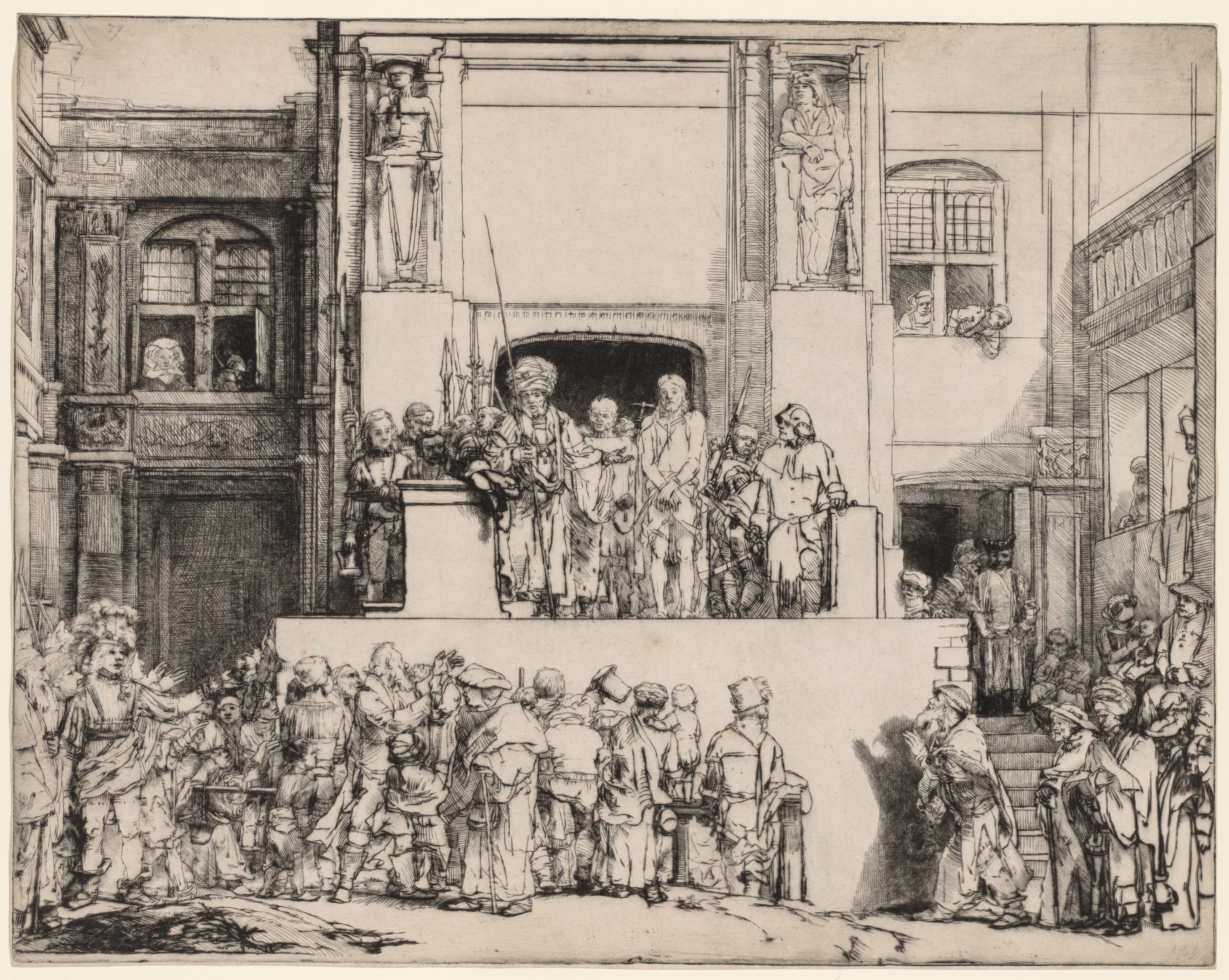The Cleveland Museum of Art
Collection Online as of April 25, 2024

Ecce Homo. Christ Presented to the People
1655
(Dutch, 1606–1669)
Sheet: 36.1 x 45.6 cm (14 3/16 x 17 15/16 in.); Platemark: 35.9 x 45.6 cm (14 1/8 x 17 15/16 in.)
Leonard C. Hanna, Jr. Fund 2006.155
Catalogue raisonné: White and Boon (Hollstein) 76, state V/VIII; B 76; Hind 271
Location: not on view
Description
Rembrandt was an experimental and innovative printmaker and the first to execute works in pure drypoint on this monumental scale. Drypoint produces blurred lines and rich, velvety shadows, but these effects are lost as the plate wears. A limited number of rich impressions exist like this fine example of the fifth state, which demonstrates how Rembrandt redefined the expressive potential of printmaking. Rembrandt’s habit of drawing from life made him a keen observer of behavior and body language, endowing his biblical scenes with a human dimension and veracity not seen previously. The throng in Christ Presented to the People represents a cross section of the population and reflects the pictorial tradition that common humanity condemned Christ. Large areas of the imposing building, symbolizing the crushing weight and authority of the state, remain unworked so that blank white paper seems radiant in contrast to rich black shadows.- Glaubinger, Jane, "Rembrandt's Printed Masterpieces", Cleveland Museum of Art. Cleveland Art: The Cleveland Museum of Art Members Magazine. Vol. 47 no. 03, March 2007 Mentioned & reproduced: p. 4 archive.orgWatkins, Catherine Bailey. Rembrandt's 1654 Life of Christ Prints: Experimentation, Tradition, and the Question of Series. 2011. Reproduced: P. 177, fig. 10
- Treasures on Paper from the Collection of the Cleveland Museum of Art. The Cleveland Museum of Art, Cleveland, OH (organizer) (March 9-June 8, 2014).
- {{cite web|title=Ecce Homo. Christ Presented to the People|url=false|author=Rembrandt van Rijn|year=1655|access-date=25 April 2024|publisher=Cleveland Museum of Art}}
Source URL:
https://www.clevelandart.org/art/2006.155